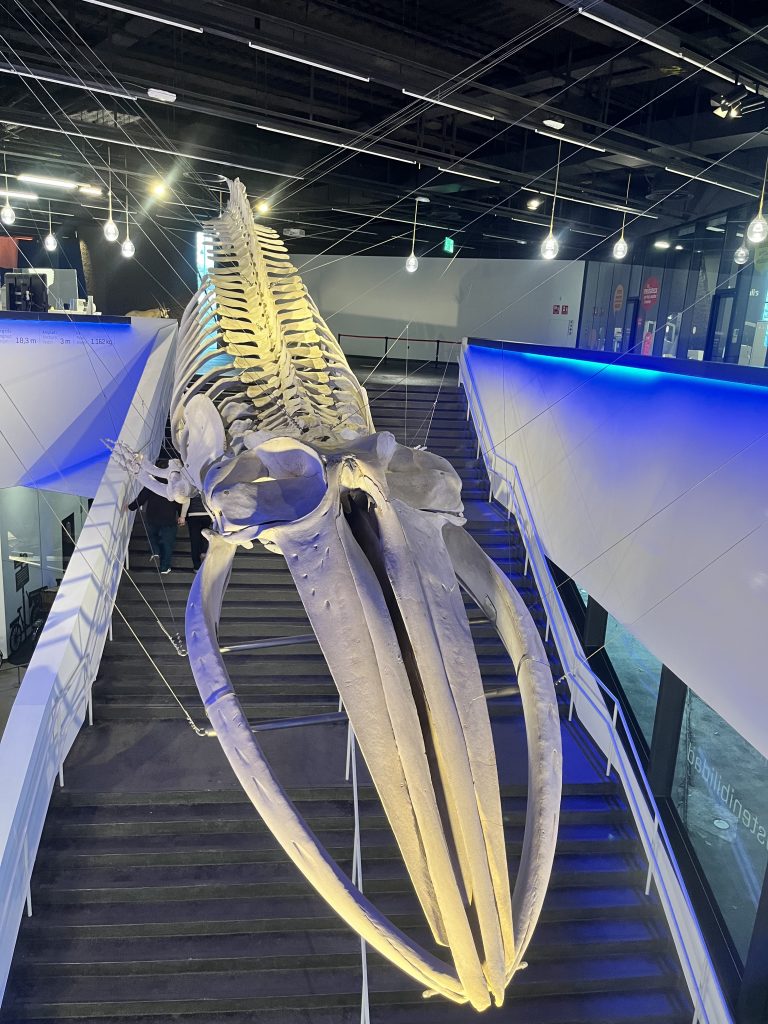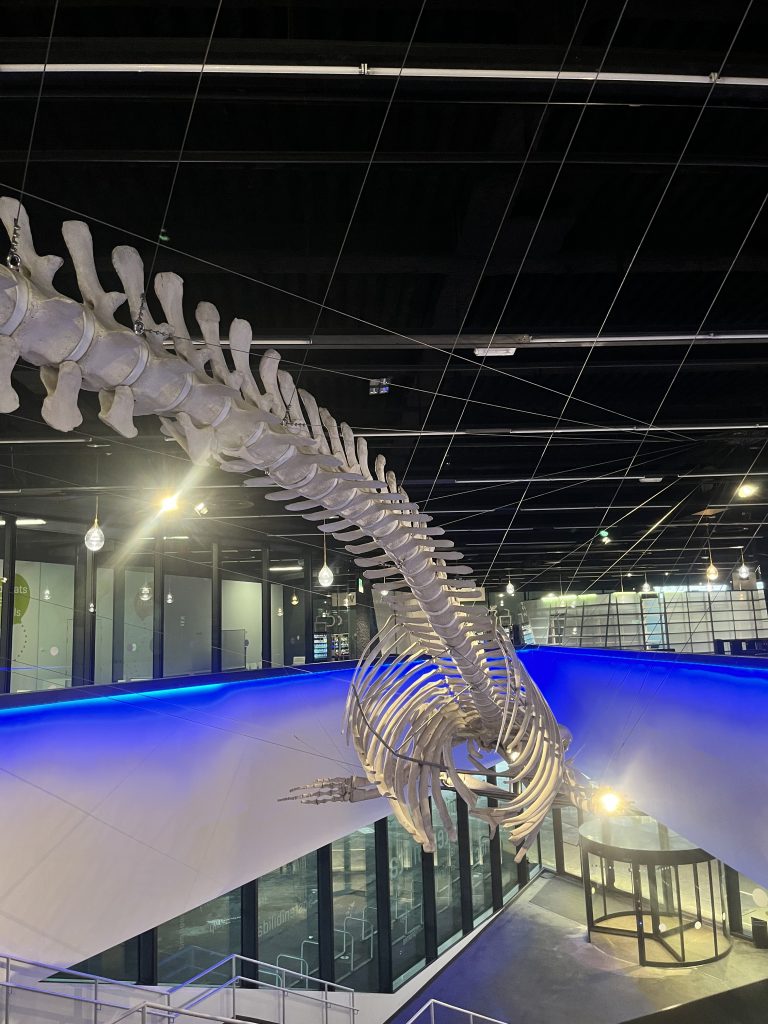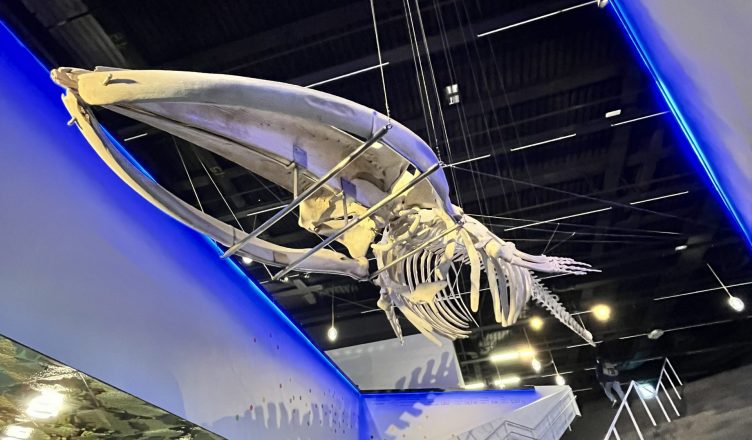A little over a week ago, I returned home from an unforgettable two-week trip to Spain with some of my closest friends. We journeyed through Barcelona, Sevilla, and Madrid, soaking in the beautiful country’s rich culture, history, and landscapes. However, one moment stood out above all others and left me with an experience I’ll cherish forever.
In Barcelona, I had the chance to visit the Museum of Natural Sciences and see the complete skeleton of a fin whale. Having observed fin whales in the Gulf of Maine, standing before the skeleton was a deeply humbling experience. This moment allowed me to connect even more deeply with these incredible animals.
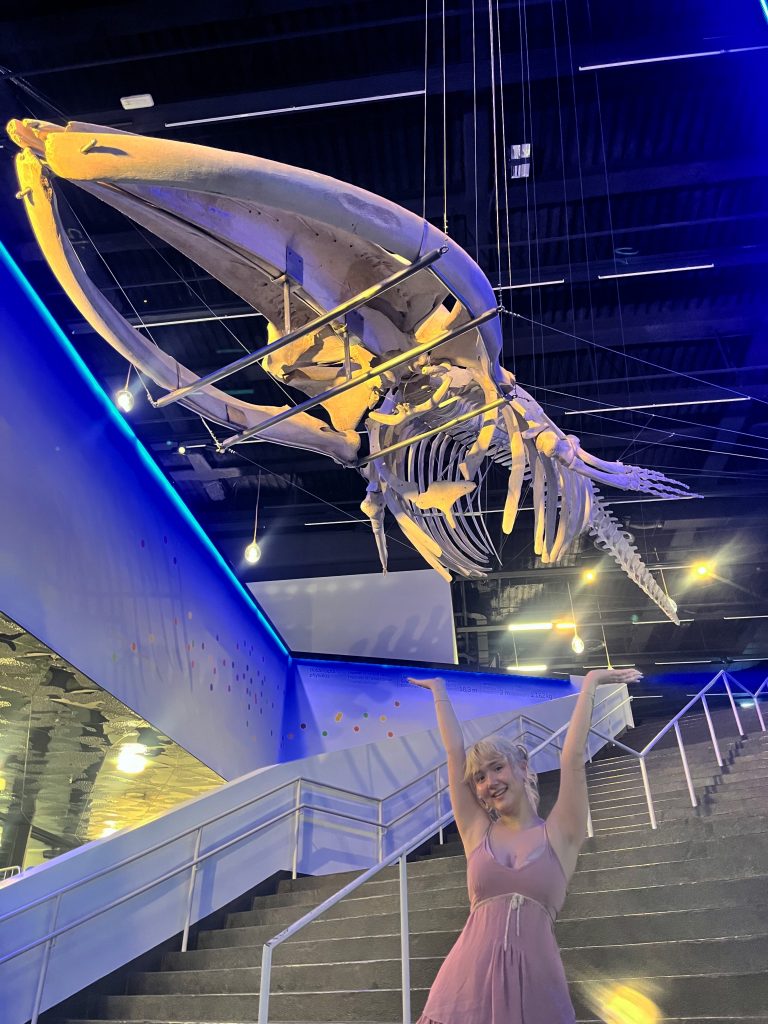
The Magnificent Fin Whale
Fin whales are the second-largest animals on Earth, after blue whales. On average, they grow to around 65 feet long, with the largest ever recorded being 88 feet. These whales can weigh up to 160,000 pounds, and despite their size, their grace and swiftness in the water are breathtaking.
Seeing a fin whale is a sight that stays with you. They have long, streamlined bodies that cut through the waves. Fin whales are migratory and found in many parts of the world, with populations most concentrated in the Northern Hemisphere. In the Gulf of Maine, they can be spotted during the summer months, feeding on small fish and crustaceans.
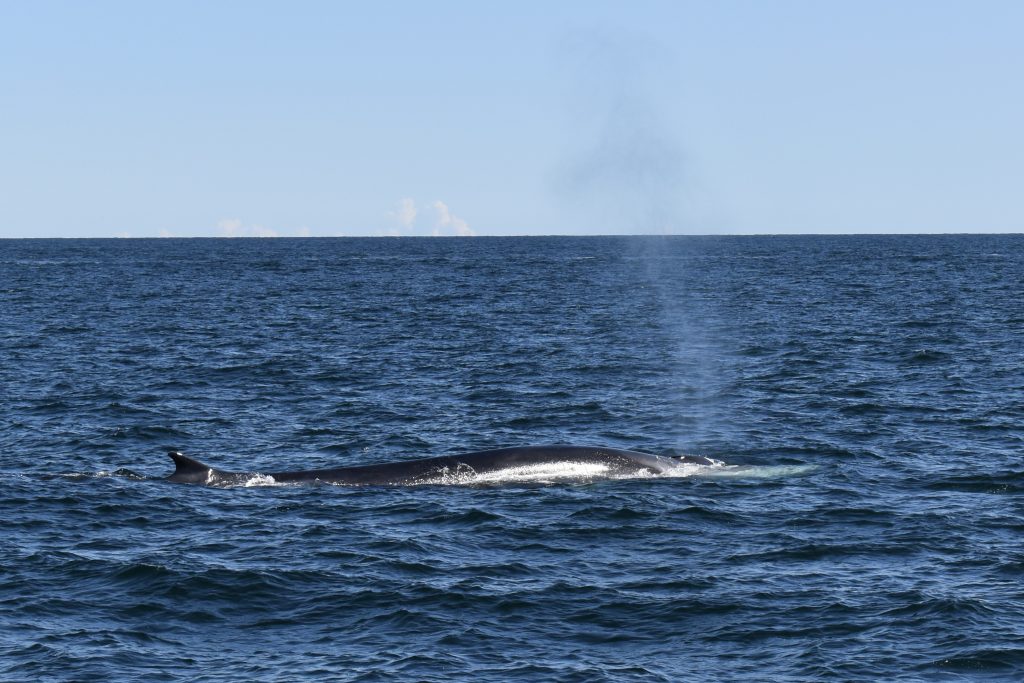
The history behind the fin whale skeleton I saw makes the moment in Barcelona even more special. This particular whale had been beached at Cap de Ras Llançà, Spain, in 1862, and its skeletal remains were later preserved as a key part of the museum’s collection. Standing in front of it, imagining what this massive creature once looked like as it moved through the oceans over 160 years ago, was surreal. It’s a testament to the dedication of those who work in conservation and research, preserving these wonders of nature for future generations.
Conservation Status of the Fin Whale
Fin whales are listed as endangered under the Endangered Species Act. Like all large whales, commercial whalers hunted fin whales, which severely lowered their populations. Although commercial whaling has been banned since the 1980s, fin whales still face significant risks. Current threats to fin whales include vessel strikes, fishing gear entanglement, ocean noise, and climate change. It’s crucial that we continue efforts to protect these majestic animals, as fin whales play a vital role in maintaining the health of marine ecosystems. Their conservation helps preserve biodiversity and mitigate the impacts of climate change. Standing before their skeleton was a powerful reminder of the beauty and fragility of these magnificent creatures.
